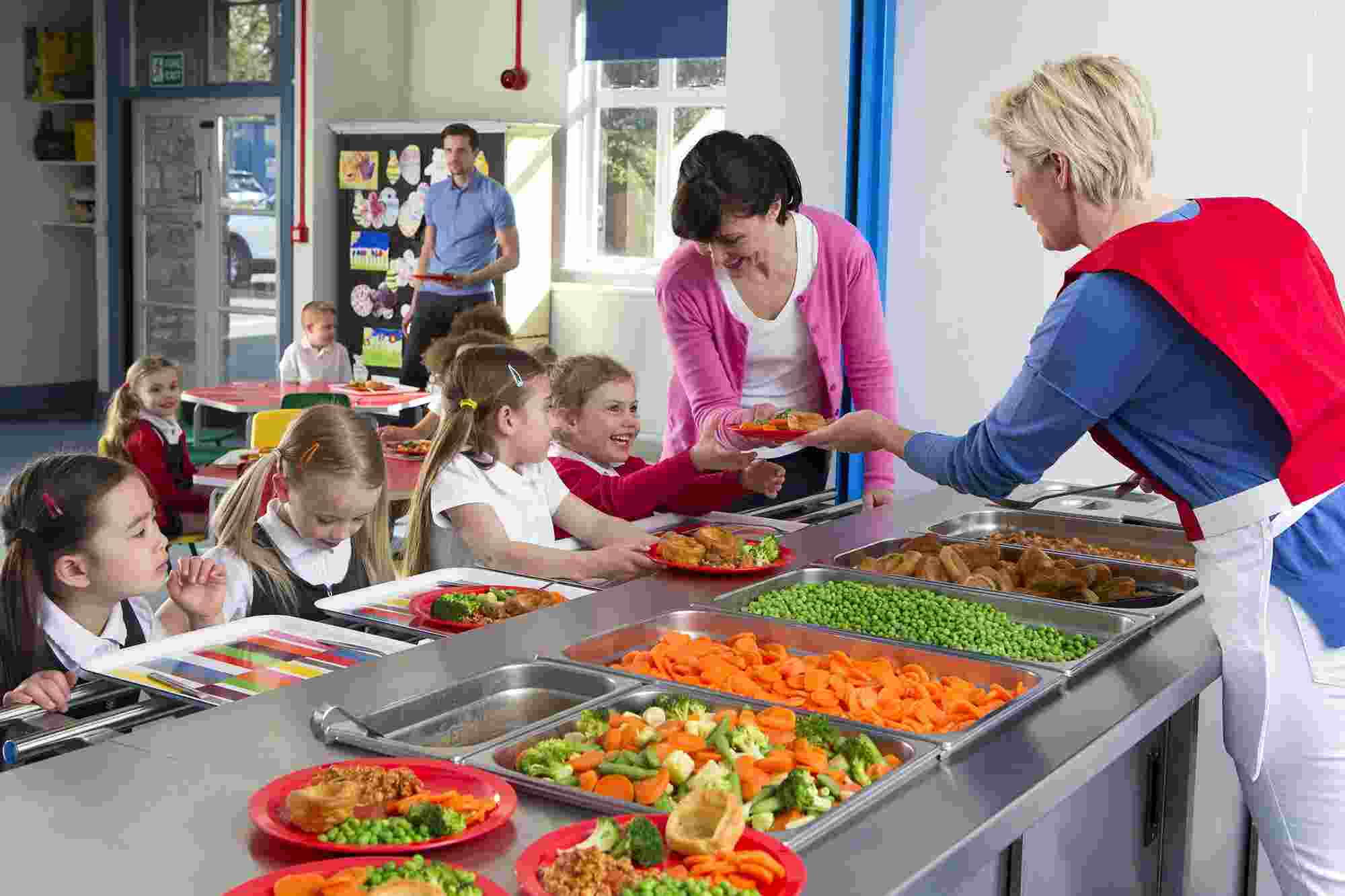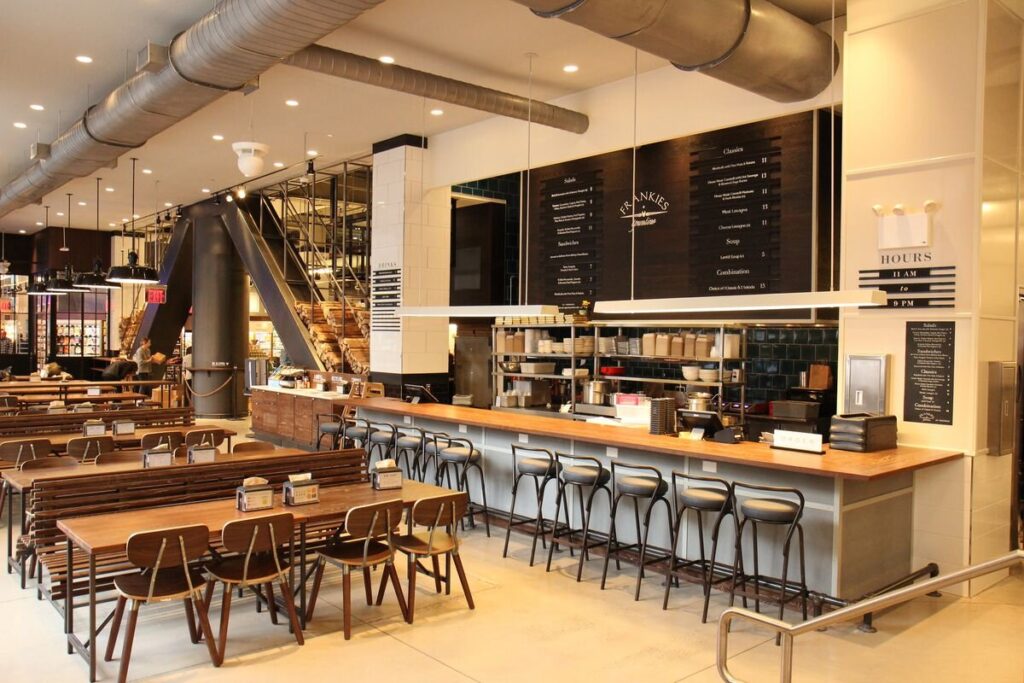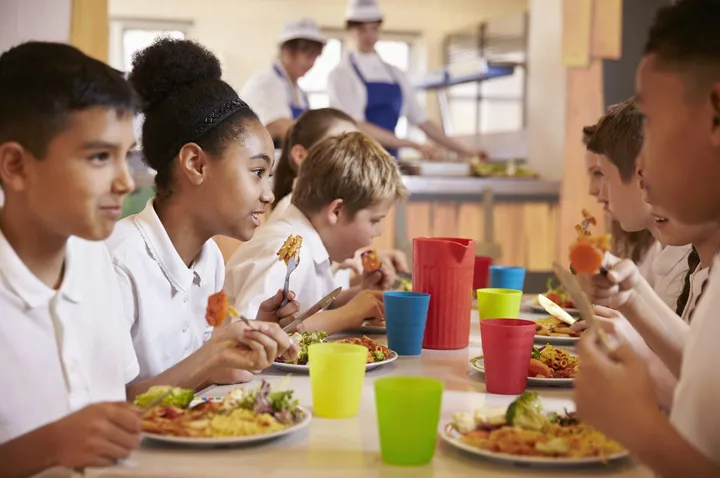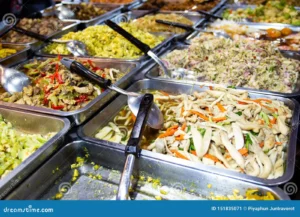Have you ever wondered where schools get their cafeteria food? It’s not as simple as just picking up groceries from a local store. Schools across the U.S. need reliable, cost-effective, and nutritious options that meet strict guidelines.
That’s why they turn to specialized school food service providers and cafeteria food vendors who work within the government school lunch program suppliers network.
Whether you’re a school administrator, a parent, or someone curious about the system, knowing where to buy school cafeteria food can help you understand the process and even find ways to access these foods for your own needs.
This guide will cover the best school cafeteria food suppliers near me, ways to save money, and how both schools and families can benefit from smarter sourcing.
Top Places to Buy School Cafeteria Food Online
Schools today have more options than ever when it comes to online ordering. Many use national institutional food suppliers that specialize in bulk ordering and compliance with USDA standards.
These platforms offer everything from fresh produce to bulk frozen food for schools, including pre-cooked meals that meet nutritional guidelines. They also provide online catalogs, easy reordering systems, and dedicated representatives who work directly with school districts.
Below is a simple comparison of popular school lunch suppliers to help you see what they offer:
| Supplier | Minimum Order | Delivery Time | USDA Approved |
| US Foods | $500 | 3-5 days | Yes |
| Sysco | $300 | 2-4 days | Yes |
| Gordon Food Service | $250 | 4-6 days | Yes |
These companies make it easy to order online, track shipments, and ensure compliance with compliant school meal providers rules. Schools also benefit from volume discounts and special pricing offered through school nutrition program vendors contracts.
Where Do Schools Get Their Cafeteria Food?
The journey from farm to cafeteria tray involves a detailed food supply chain for schools. Most U.S. schools participate in the National School Lunch Program (NSLP), which provides funding and guidelines for meals.
Schools must work with approved food distributors for national school lunch program standards to meet nutritional goals.
Large K-12 food service distributors like Aramark, Sodexo, and Chartwells often manage food services on behalf of districts. These school food service providers handle sourcing, purchasing, and even meal preparation in some cases.
Schools may also use local school food suppliers to support nearby farms or food hubs, especially for fresh produce and dairy. This helps reduce food miles and supports sustainability. Some districts mix local and national sources to balance cost and freshness, depending on what’s available seasonally.
Best Food Suppliers for School Lunch Programs
When it comes to finding the best school cafeteria food suppliers near me, several companies stand out. Aramark, Sodexo, and Chartwells are leaders in the industry, each offering full-service solutions from menu planning to sourcing and delivery.
These providers work under strict USDA guidelines, supplying USDA approved school food that meets calorie, sodium, and fat requirements. Their partnerships with farmers, processors, and manufacturers ensure a steady stream of high-quality products throughout the school year.
In addition to these giants, schools can also partner with cafeteria food vendors like Reinhart Foodservice or regional suppliers who specialize in certain types of food, such as fresh produce or dairy. Choosing the right partner means evaluating cost, delivery reliability, product quality, and menu variety.
How to Find Affordable School Cafeteria Food Vendors
Budget constraints make it crucial for schools to work with affordable food vendors for schools. One way schools save money is by joining cooperative purchasing groups, which allow multiple districts to pool resources and negotiate lower prices.
Another strategy is partnering with local school food suppliers who may offer fresher products at lower transportation costs.
Schools also benefit by buying direct from manufacturers or farmers through state farm-to-school programs. Some districts reduce costs by using more prepackaged school meals, which cut down on labor expenses.
Comparing contracts from multiple school lunch suppliers and asking for detailed quotes helps districts find the best deals without sacrificing nutrition or quality.
Local vs. National Suppliers: Where Should You Buy School Cafeteria Food?
There’s an ongoing debate over whether schools should buy from local school food suppliers or stick with national chains. Local suppliers offer fresher food and support community economies, but they may lack the variety or volume needed for large districts.
On the other hand, national school food distribution companies like Sysco provide consistent delivery, wider product ranges, and reliable compliance with USDA approved school food standards.
Here’s a table comparing local and national suppliers:
|
Factor |
Local Suppliers | National Suppliers |
|
Freshness |
Higher | Lower |
| Price | Can be lower |
Often higher volume discounts |
| Product Variety | Limited |
Wide selection |
| Delivery Range | Local only |
Nationwide |
Each school must weigh these factors based on budget, nutritional goals, and values like sustainability.
Where Can Parents Purchase School Cafeteria Food?
Some parents want access to prepackaged school meals or bulk items typically served in schools. While many distributors focus on institutional clients, platforms like Restaurant Depot or Costco Business Center sell to the public and offer products similar to school cafeteria food delivery companies.
Parents planning events or feeding large families can source bulk frozen chicken, vegetables, or snack packs that mirror cafeteria menus.
A parent in Ohio shared, “I wanted to serve the same healthy meals my kids ate at school. I found a local supplier who let me buy through a school partnership program. It saved me money and my kids loved it.” With a little research, families can tap into similar opportunities in their areas.
Bulk Purchasing: Where to Buy Large Quantities of School Cafeteria Food
Schools needing bulk frozen food for schools often turn to bulk food suppliers for schools like Sysco, US Foods, or local warehouse clubs.
Buying in large quantities helps lower per-unit costs, but it also requires proper storage facilities to keep food safe. Schools sometimes share storage or delivery contracts with neighboring districts to reduce costs further.
Understanding delivery schedules, minimum order sizes, and storage capacity is key when working with school lunch suppliers in bulk purchasing agreements.
Top Wholesale Distributors of School Cafeteria Food
Some of the leading wholesale school lunch food distributors in the U.S. include Sysco, US Foods, Gordon Food Service, and Performance Food Group.
These companies supply everything from raw ingredients to pre-cooked meals and snacks. Working with school food service providers ensures schools meet all federal and state nutritional requirements.
These school food distribution companies also help with menu planning, cost analysis, and compliance reporting, offering an all-in-one solution for districts.
Where to Buy Healthy School Cafeteria Food Options
Healthy meals are a growing priority for schools nationwide. Many districts choose healthy school lunch providers who focus on low-sodium, whole-grain, and fresh produce options.
Companies like Revolution Foods and Fresh Direct specialize in healthier cafeteria menus aligned with compliant school meal providers regulations.
These suppliers offer organic items, allergy-friendly meals, and plant-based proteins to meet diverse dietary needs while complying with USDA standards. By working with specialized vendors, schools can improve student nutrition without exceeding budgets.
School Cafeteria Food Near Me: Finding Local Suppliers
Finding school cafeteria food near me starts with checking local food hubs, farm-to-school programs, or regional distributors. Many states have directories listing local school food suppliers who meet school lunch standards.
Google Maps searches for “school food suppliers near me” or contacting nearby school districts for recommendations are also helpful.
Choosing local suppliers not only reduces delivery costs but also supports farmers in the community. Some schools also partner with school nutrition program vendors who specialize in local sourcing, combining freshness with compliance.
Conclusion
Choosing where to buy school cafeteria food isn’t just about price; it’s about balancing cost, nutrition, compliance, and sustainability.
Whether schools work with national distributors, local school food suppliers, or a mix of both, the right vendor can make a big difference in meal quality and budget savings. Families interested in similar foods can also explore wholesale options or community partnerships for access.
By understanding the supply chain and available options, schools and parents alike can make smarter choices that benefit students’ health and school finances.
Frequently Asked Questions
Q: Can individuals buy from school food distributors?
A: Yes, through cash & carry programs or online marketplaces that cater to both businesses and individuals.
Q: How long does school cafeteria food last?
A: Frozen items typically last 6-12 months when stored properly. Always check specific product guidelines.
Q: Are these the exact same products schools use?
A: Yes, when purchased from authorized distributors. Look for “School Lunch Approved” labels.













